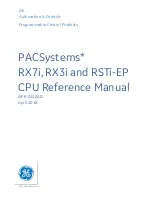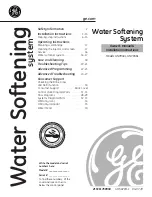
iSMA-B-MINI/MIX Modbus User Manual
www.ismacontrolli.com
DMP262en | 1st Issue rev. 8 | 05/2022
page 50 of 107
Time Relay NC [ms]
In this mode, if the output value is false, the falling edge of the digital input sets the
output to a true value. Every rising edge of the digital input starts the counter from the
beginning so that the output stays in true value for a time defined in the TIME VALUE
register (expressed in milliseconds), counting from the last rising edge of the digital input.
The action of time relay can be executed remotely by changing the state from false to
true in the relevant COMMAND register (40020). Outputs can be also overwritten with the
register of DIGITAL OUTPUT module (40018), which allows for remote control from BMS.
Time Relay NO [s]
In this mode, if the output value is false, the rising edge of the digital input sets the output
to a true value. Every falling edge on the digital input starts the counter from the
beginning so that the output stays in true value for a time defined in TIME VALUE register
(expressed in seconds), counting from the last falling edge of the digital input. The action
of time relay can be executed remotely by changing the state from false to true in
relevant COMMAND register (40020). Outputs can be also overwritten with the register of
DIGITAL OUTPUT module (40018), which allows for remote control from BMS.
Time Relay NC [s]
In this mode, if the output value is false, the falling edge of the digital input sets the
output to a true value. Every rising edge on the digital input starts the counter from the
beginning so that the output stays in true value for a time defined in the TIME VALUE
register (expressed in seconds), counting from the last rising edge of the digital input. The
action of time relay can be executed remotely by changing state from false to true in the
relevant COMMAND register (40020). Outputs can be also overwritten with the register of
DIGITAL OUTPUT module (40018), which allows for remote control from BMS.
Input Forwarding
In this mode, any signal from the input is transferred directly to the assigned output
without any modifications. The operation of the input forwarding mode can be stopped
with the block input function.
Heating Mode (4U4O-H and 4U4O-H-IP Only)
In this mode, the output is controlled like a typical thermostat, based on the Setpoint
register and control value (input value) with differential parameter defined in the
Differential register. The output signal works in 2 states, low and high.
If the control value is lower or equal with the difference between the Setpoint register
and the Differential register, the output is in the low state.
If the control value is higher or equal with the sum of the Setpoint register and the
Differential register, the output is in the high state.
Output in the low state:
Control value >= Se Differential
Output in the high state:
Control value <= Setpoint
–
Differential
















































